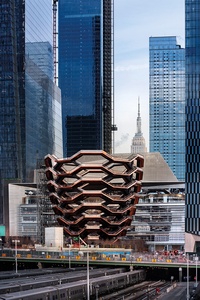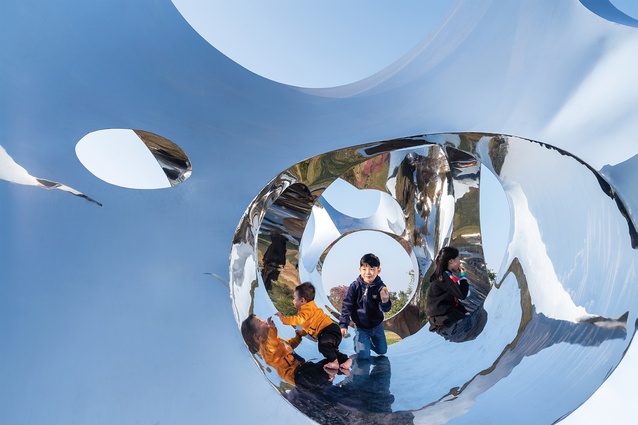Report from WAF
New Zealand architects Craig Moller, Dean Mackenzie and Hamish Monk report on their experiences of the 2019 World Architecture Festival.
Depressingly good
The World Architecture Festival (WAF) Awards is a depressingly good event to attend: good in that it inspires in the range of projects presented; depressing in that the projects act as a yardstick to your own work and presentation skills. There is nothing like close proximity to breed contempt of your own work and the shock of the new of the other projects to inspire you to keep going.
The WAF Awards require the almost-perfect project – one that is free from impurities and contamination, and without compromise. Issues of adjoining sites, compromised briefs, unstable components of the design proposition, or whether or not a project is architect driven, are of no concern to the jury.
Rightly or wrongly, this is often a feature of the architectural crit, which, potentially, stems from architecture schools with their idealised briefs and little concern for constraints. It is not to be critical of this stance, as good architecture often ignores some concerns in order to develop and exaggerate others.
The presentation itself is reminiscent of the school crit: the nerves beforehand; the camaraderie of the architects presenting; the small pleasure taken at another’s misfortune at the hands of the jury; and the wooziness of the presentation itself when time and space seem to warp into some sort of out-of-body experience. Then there is the feeling at the end, particularly when not successful. It feels like a B+ grade – great effort, some good ideas but inevitably falling short of the desired and coveted A.

The range of the projects, from small and modest to large scale and heroic, is breathtaking. It’s also clear which are the popular sessions, as seen by the sudden influx of people pressing in for the Heatherwick Studio presentation of Vessel. It’s a project impressive in its design intent, structural bravado, development of new materials and construction, and prefabrication, plus it enjoyed a generous budget, which is not disclosed.
Presentations are generally polished, slick and almost too well rehearsed. But there is still the odd stumble, the awkward question and the nervous presenter who eventually overcomes the jitters. Sergei Tchoban from Speech, presenting the Russian Hockey Stadium in Syktyvkar, maintained his relaxed demeanour despite a misbehaving audiovisual system and was able to roll with the punches and present in a coherent manner, unlike the well-known MVRDV partner who made a complete hash of the allotted 10 minutes, which evaporated, resulting in just a cursory overview of the project. Then there’s the odd obfuscation of the born salesperson architect, such as Manfred Yuen from Groundwork Architecture, whose project is not well received but still manages to convey self-belief – that the architect will have a successful career despite what the jury thinks.
After the awards, there is still Amsterdam, home to the Dutch masters, to visit: Rembrandt’s Night Watch at the Rijksmuseum and a museum dedicated to Vincent van Gogh. Perhaps Frank was right, not FLW but Gehry, when he suggests the best inspiration comes from artists not architects. But, equally, the inspiration comes from cities not buildings. Perhaps we should be designing better cities as places to live, not individual buildings shouting to be heard in the cacophony of the WAF Awards.
– Craig Moller
Slightly controversial
At last year’s World Architecture Festival in Amsterdam, Monk Mackenzie was invited to help judge the Small Project category – the finalists in this category having been selected already by WAF. The dozen or so entries ranged from a wedding venue in Tokyo to a performing arts school in Nelson to a sculptural piece in China – all quite different schemes and locations but all of a very high quality.
Judging is always difficult, as schemes are never easily compared against one another – even when they are supposedly all in the same category. There are naturally different perspectives between judges and this leads to some interesting discussion, especially if the competition is close and there is no obvious or standout winner.
Our jury awarded the Small Project prize to Studio Link-Arc for its urban sculpture in Zhangzhou, China – a slightly controversial award internally but one all judges could agree on.
In our minds, the key in presenting to a jury who may be watching 15 or more presentations is not just in presenting the scheme or the architecture but in adding another dimension to the story, whether it be social, sculptural or environmental.
We entered three projects at the Festival: our Hobsonville Point project with apartments and townhouses for Winton Partners; a master plan in central Otago with visitor accommodation, hotels and retail; and our replacement for the bascule bridge on the Auckland waterfront at Wynyard for Panuku, along with our partners Beca, Eadon, Wraight + Associates and Athfield Architects, and artists Reuben Kirkwood, Graham Tipene and Tessa Harris. We were awarded a highly commended for the Wynyard project – ultimately losing to a Shenzhen master plan by WilkinsonEyre.
There are some great speakers over the course of the three-day event; every one of the Festival’s three evenings ends with at least one keynote speaker, plus more during each day. The keynote speakers for 2019 included Elizabeth Diller, Massimiliano Fuksas and Kim Herforth Nielsen from 3XN.
We also met with some fantastic foreign offices while there, including Modern Office from Calgary, Canada, and Linehouse, based in Shanghai and Hong Kong, one of whose two directors is from New Zealand; both are firms to watch in the future.
– Dean Mackenzie and Hamish Monk











